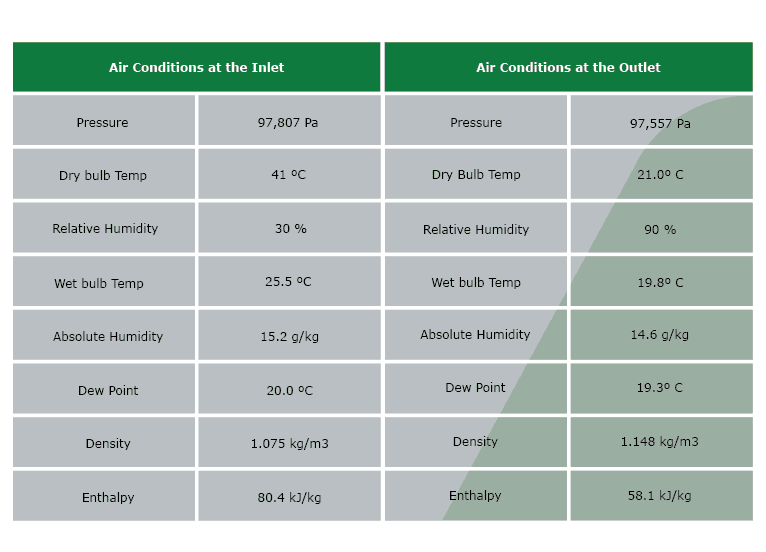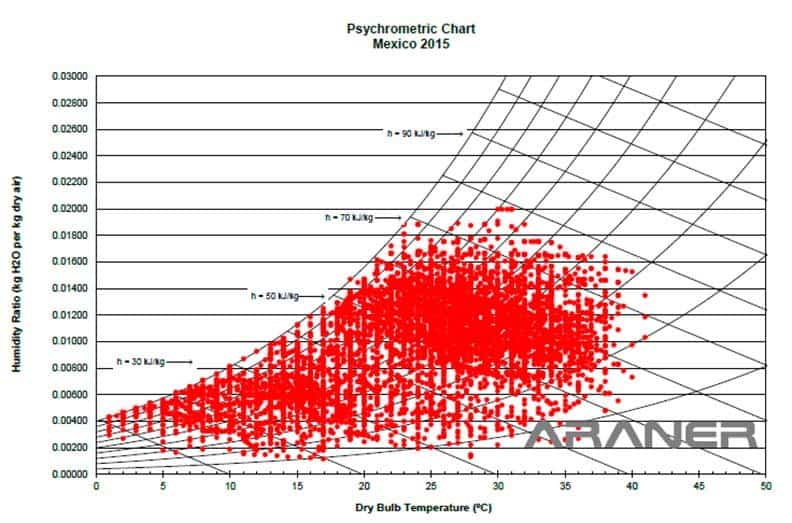Globally, natural gas fired power generation is growing tremendously. One of the major reasons behind this surge is modern gas turbine development, which has given natural gas a new appeal. Consequently, turbine power output has become an important component of power plants in this billion-dollar industry.
Output augmentation is suddenly a necessity in power plants
Any manager looking to reduce environmental degradation and improve performance in power production must consider this crucial plant component as a priority. Consider this fact: a gas turbine efficiency increase of just 1 % is enough to reduce carbon dioxide emissions by 3.5 million metric tons in America. The basis of this post, however, is turbine inlet air-cooling (TIAC) as an output improvement solution in a plant located in an arid climate. Let’s see how this technology can make an impact through an illustrative fiction example for the Oil & Gas Industry.
Northern Mexico case
Successful implementation of TIAC in a gas power plant is evident in northern Mexico. The plant in question comprises of three gas compression trains, with each of the trains connected to a LM6000 PC aero derivative gas turbine. The gas compressors require a combined 115 MW to operate.
What are the conditions here?
A team did extensive research to establish the ambient conditions in the region. The results showed a maximum relative humidity and temperature of 30 % and 41 degrees centigrade respectively. Other parameters collected are as below:
Fig 1: The Ambient Conditions at Plant
The challenges
The climatic conditions in northern Mexico are unfavorable for the sensitive LM 6000 PC turbines. The chief factor of concern is temperature, which can be as high as 41 degrees centigrade, according to the psychometric chart in figure 2. From observation, any time the temperature exceeds 35 degrees, power drops from the ideal 42,517 MW to as low as 25MW. Note that these turbines need to continue operating even at these extreme temperatures.
Fig 2: Climatology for 1 Year
The solution
Faced with these unforgiving conditions, designers at the plant had to find a lasting solution. Initially, they had five LM 6000 PC turbines in the design. However, with turbine inlet air cooling (TIAC) technology from ARANER, there was a remarkable transformation in output and savings. By adding this state-of-the-art solution, the design stuck to three turbines, saving the investors loads of money. The technology optimized the turbines such that the combined power output increased from 75,591 kW to 115,710 kW. That is a whopping 49 % increase!
Selection of power augmentation solution
There are different ways of enhancing turbine performance, one of them being decreasing ambient temperatures. A few techniques have been used for decades worldwide to achieve this:
- Absorption chiller
- High pressure fogging
- Thermal energy storage
- Refrigerative cooling
- Wetted media evaporative cooling
Unfortunately, this location has no source of plentiful water to support traditional cooling such as fogging or evaporative cooling. Since air cooled condensers consume no water, they became the obvious choice for this situation. From analysis, the system needed 2,450 tons of refrigeration to achieve a stable temperature of 21 degrees for the three turbines throughout the year. The designers needed to select the best chiller type. To avoid parasitic loads associated with compression chillers, the designers opted for absorption chillers. Further, water-ammonia absorption chillers were chosen because the other option (lithium-bromide absorption chillers) presented crystallization challenges under the high condensation temperatures.
Conclusion
Power output of a combustion turbine in the oil and gas industry is affected by air mass flow rate. With every increase in inlet air temperature, there is a decrease in air density and consequently, a decrease in air mass flow rate. Therefore, cooling inlet air using TIAC solution helps increase turbine power output. This post is about the steps this fictional power plant in northern Mexico took to increase its power production from its three combustion turbines in the extremely hot environment. The applicability of TIAC for this project has been reviewed. To sum up, evaporative cooling is unsuitable for the desert climate because it requires immense amount of water. The best solution, therefore, is TIAC with air-cooled chillers of the water-ammonia absorption type. Do you want an in-depth look at what solution is the best for your situation? Contact us at ARANER and our experts will provide a tailor-made solution that will boost you to your objectives.










